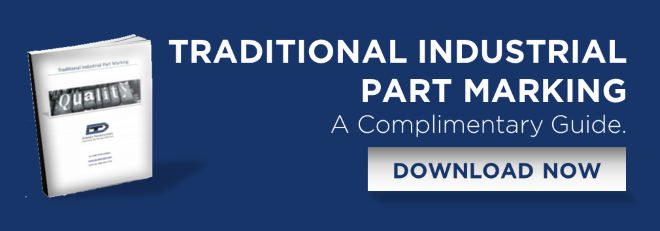3 min read
What's the Difference Between Embossing and Debossing?
Matt Martin
Thu, Aug 08, 2024 @ 13:08 PM
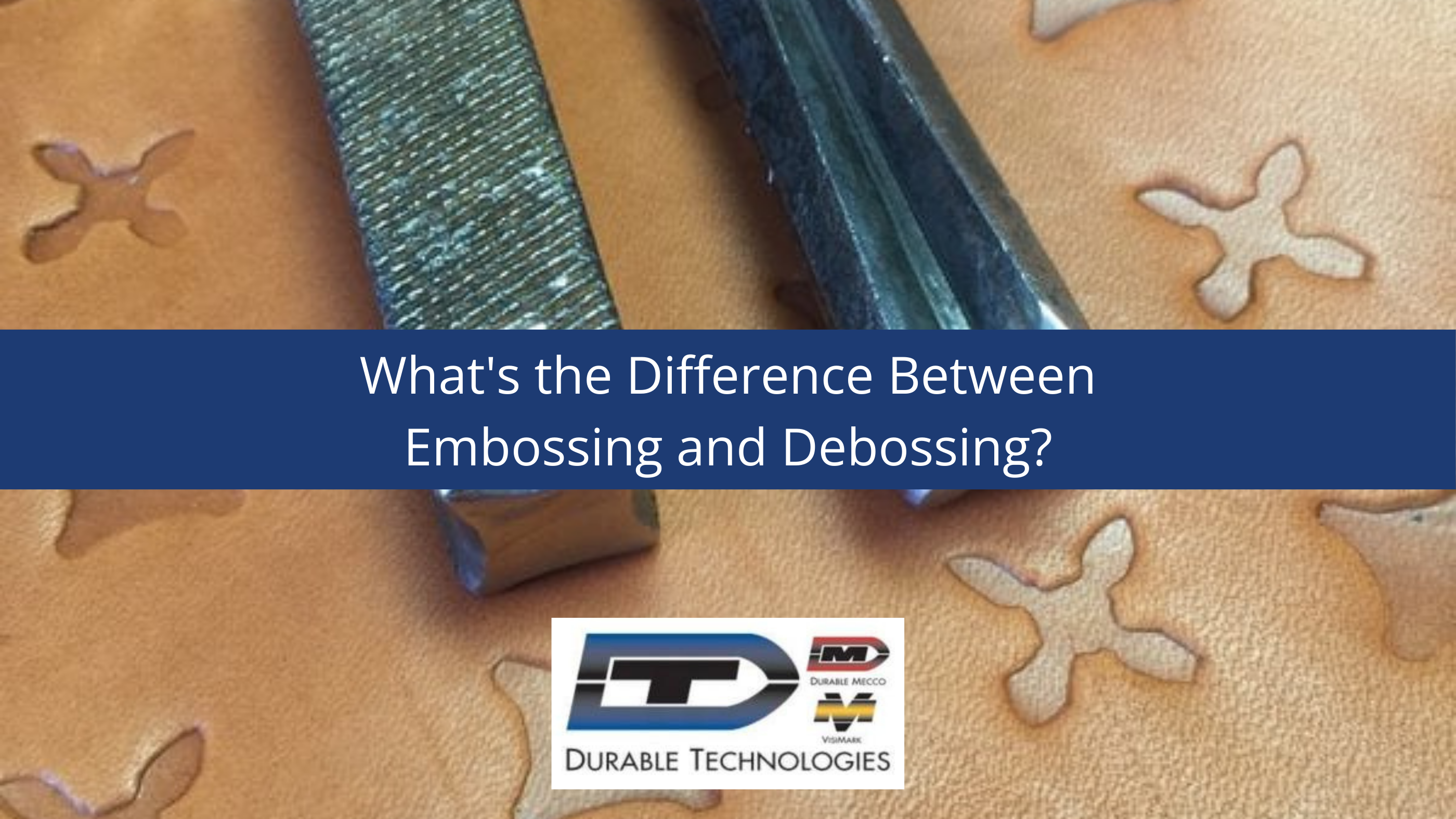
On more than a few occasions, we have been asked about custom metal embossing stamps, what they are, and how they are used.
In the world of direct part marking, there are a few misconceptions and misunderstandings that can creep up, often because industrial marking is a sphere that uses industry jargon that is not always well-known outside of the marking device industry.
The question “what is a metal embossing stamp?” is one of these areas of misconception and confusion.
The phrase "embossing stamp" is a technical, industrial term that can sometimes cause confusion for those not familiar with the marking industry.
For instance, if someone used a hot stamp die to stamp leather, it would be debossing, but the user might refer to the resulting mark (incorrectly) as embossing. The part used to create the impression is referred to as a die, but the image created in the leather is recessed (debossed).
The phrase “custom metal embossing stamp” is really a misnomer. There are custom metal stamps and dies that create debossed images, and there are custom metal embossing type and dies that create embossed images.
To understand what a metal embossing stamp is and isn’t, it is important to understand the difference between embossing and debossing.
Embossing vs. Debossing
The first thing to clarify is the difference between embossing and debossing. Simply put, embossing creates a raised impression in the material being stamped. Debossing creates a sunk impression.
The term "debossing" is more prevalent in hot stamping applications (leather) as opposed to industrial part marking applications (metal).
Stamps, like the hand stamps shown below, have a raised area on the stamp face that, when struck with a hammer, creates a debossed (sunk) impression in a material like leather or plastic.
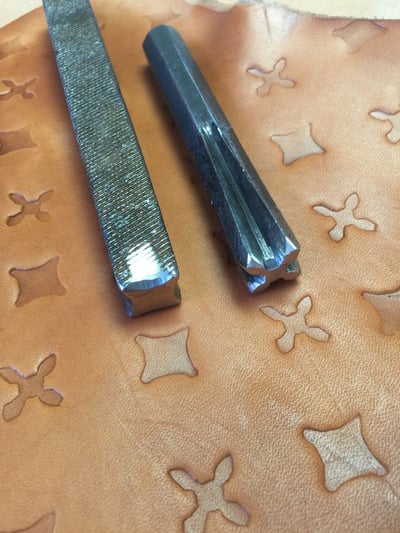
We also manufacture embossing type for package date coding applications where you have male (raised copy) and female (matching sunk copy) type that fit together to leave a raised date code (most commonly found on can lids).
This type of embossing type is typically used with canning, closing, and seamer machines. See below for an example of an embossed date code impression on a can lid made using male and female embossing type.
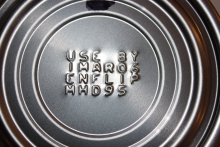
Embossing Dies
.jpg?width=300&name=male%20and%20female%20dies%20(1).jpg) There are many types of embossing dies that are used in industrial settings.
There are many types of embossing dies that are used in industrial settings.
Our custom steel embossing and coining dies are crucial in the sheet metal industry. They offer versatile solutions for creating permanent, distinctive markings on various metal surfaces. These precision-engineered tools are designed to meet the diverse needs of manufacturers across multiple sectors.
Embossing and coining dies are used to produce:
- Raised letters: These can include product names, serial numbers, or important information that needs to stand out on the metal surface.
- Trademarks: Company logos and brand identifiers can be permanently imprinted, enhancing product recognition and protecting against counterfeiting.
- Code symbols: QR codes, barcodes, or other machine-readable symbols can be used for inventory tracking and product identification.
- Patterns: Decorative or functional patterns that can improve the aesthetic appeal or performance characteristics of the metal sheet.
- Other designs: Custom graphics, technical diagrams, or any other visual elements required by the manufacturer.
The process involves applying significant pressure to the metal sheet using our specially crafted dies, resulting in a durable, three-dimensional impression. This technique is applicable to a wide range of metals, including steel, aluminum, copper, and brass.
Our dies are manufactured using high-grade tool steel, ensuring longevity and consistent performance even under repeated use. They are precision-machined to exact tolerances, guaranteeing crisp, clear impressions every time.
The applications for these embossed or coined metal sheets are vast, spanning industries such as automotive, aerospace, construction, appliance manufacturing, and more. The permanent nature of the markings makes them ideal for components that require long-lasting identification or branding.
By offering customizable die solutions, we enable our clients to meet specific regulatory requirements, enhance their product branding, improve traceability, and add value to their metal components. Our skilled engineers work closely with each client to design and produce dies that perfectly match their unique specifications and production needs.
Custom Metal Stamps
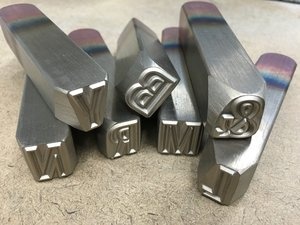 We have written much on the Durable Industrial Marking Blog about custom metal stamps. You can follow the links below to learn more about personalization and customization with metal stamps.
We have written much on the Durable Industrial Marking Blog about custom metal stamps. You can follow the links below to learn more about personalization and customization with metal stamps.
Typically, however, custom metal stamps are used in low-volume applications to add a static part number or personalization to a material like wood or metal.
Check out the links below for examples of debossed marks created with metal stamps.
Custom Steel Hand Stamps for High-End Furniture
Antique Tool Makers Mark Hand Stamps
Learn More
You can learn more about embossing dies and metal stamps by contacting us here with any questions or to request a quote.


